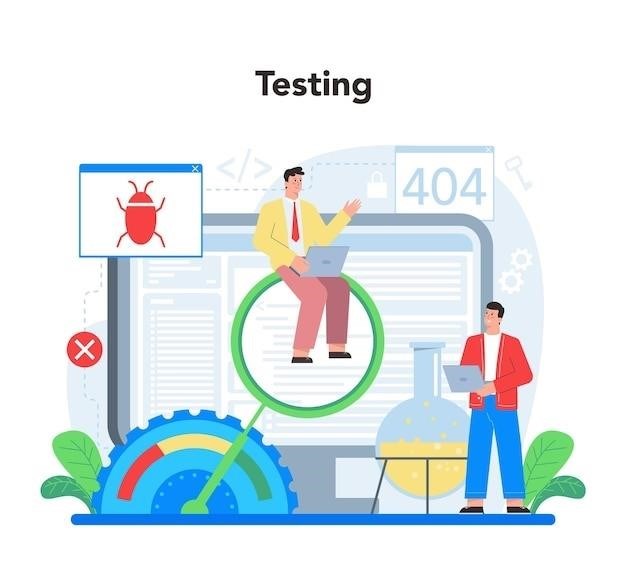Setting Up Your API Testing Environment
To begin API testing, select a suitable tool like Postman. Familiarize yourself with GitHub’s REST API documentation and authentication methods. Ensure you have the necessary credentials and understand the API endpoints you’ll be interacting with for your tests. Proper setup is crucial for successful API testing.
Choosing Your API Testing Tool
Selecting the right API testing tool is paramount for efficient and effective testing. Popular choices include Postman, known for its user-friendly interface and extensive features, making it ideal for both beginners and experienced testers. Other options include REST-assured (a Java library) and tools integrated within IDEs. The choice often depends on your programming language preference and project requirements. Consider factors like ease of use, scripting capabilities, reporting features, and community support when making your decision. For comprehensive testing, a tool allowing for creating and managing test suites is beneficial. Remember that a well-chosen tool can significantly streamline your workflow and enhance the overall quality of your API tests.
GitHub API Authentication
Before you start testing the GitHub API, you’ll need to authenticate your requests. GitHub uses OAuth for authorization, requiring a Personal Access Token (PAT) or an OAuth app. To obtain a PAT, visit your GitHub settings, navigate to Developer settings, and generate a new token with the necessary scopes (permissions) for your tests. Keep this token confidential; it acts as your API key. Alternatively, creating an OAuth app provides a more secure and manageable approach for applications needing extended access. Remember to carefully select the required scopes to minimize security risks. Once you have your PAT or OAuth credentials, include them in your API requests using the appropriate authentication method specified in the GitHub API documentation. Incorrect authentication will result in failed API calls.
Writing Your First GitHub API Test
Start by making a simple GET request to a GitHub API endpoint, such as fetching user information. Then, verify the response by checking the status code and examining the JSON response data for expected values, ensuring accuracy and completeness of the test.
Making a GET Request
To initiate a GET request using tools like Postman or curl, you will first need the correct API endpoint URL. GitHub’s REST API provides various endpoints; for example, to retrieve information about a specific repository, you might use an endpoint like https://api.github.com/repos/{owner}/{repo}, replacing {owner} and {repo} with the actual repository owner’s username and the repository name. You’ll then construct your request, specifying the HTTP method as GET. Depending on your chosen tool, you may need to include authentication details (like a personal access token) in the request headers to authorize access to the GitHub API. Once your request is correctly formatted, send it to the GitHub API. The response from the server, typically in JSON format, will contain the requested data.
Verifying the Response
After sending a GET request to the GitHub API, the crucial next step is verifying the response. This involves checking that the response accurately reflects the expected data. Tools like Postman allow you to inspect the response body directly, often presented as JSON. You should verify the status code; a 200 OK indicates success. Then, you’ll need to validate the content of the JSON response. This might involve checking specific fields for the correct values, ensuring the presence of expected data elements, and confirming that data types match expectations. For more robust validation, consider using assertion libraries within your testing framework (if you’re not using a tool with built-in assertion capabilities). These libraries allow for more sophisticated checks, including data comparisons and verifying the response structure. Thorough response verification ensures the accuracy and reliability of your API tests.

Advanced Testing Techniques
Explore sophisticated testing methods such as implementing detailed assertions and leveraging Postman’s capabilities for efficient API interaction and test creation. Mastering these techniques will significantly improve your API testing workflow and results.
Using Postman for API Testing
Postman is a widely used and powerful tool for API testing, offering a user-friendly interface for creating and managing API requests. Begin by installing Postman and creating a new request. Specify the HTTP method (GET, POST, PUT, DELETE), enter the GitHub API endpoint URL, and add any necessary headers, such as authentication tokens. Postman allows you to easily send requests and inspect the responses, including headers, status codes, and body content. You can save your requests and organize them into collections for better management. Postman’s built-in features for testing, including the ability to write scripts and assertions, provide comprehensive capabilities for validating API responses and ensuring data integrity. By leveraging Postman’s features, you can effectively test various aspects of the GitHub API, ensuring its functionality and reliability. The ability to easily create and manage API requests, along with robust testing features, makes Postman an invaluable asset for API testing workflows. The intuitive design simplifies the process of testing different endpoints and observing responses, streamlining the overall API testing process.
Implementing Assertions and Tests
Robust API testing necessitates the implementation of assertions to validate the accuracy of API responses. Within Postman, you can leverage its scripting capabilities, typically using JavaScript, to define these assertions. These scripts examine various aspects of the response, such as status codes, response times, and the structure and content of the response body. For instance, you might assert that a successful GET request returns a 200 OK status code, or that a specific JSON element within the response body matches an expected value. These assertions are critical for automatically verifying the correctness of API responses, helping to identify any discrepancies or errors. A well-structured set of assertions ensures comprehensive testing, providing confidence in the reliability of the GitHub API; Consider using test frameworks or libraries within your scripting to enhance the organization and maintainability of your tests. The use of assertions transforms simple requests into comprehensive tests, providing invaluable insights into the API’s behavior and robustness.

Automating Your Tests
Automating API tests using tools like Postman and integrating them with CI/CD pipelines, such as GitHub Actions, ensures continuous testing and early detection of issues within the API.
Continuous Integration with GitHub Actions
GitHub Actions provides a robust CI/CD platform perfectly suited for automating your API tests. You can create workflows that automatically run your tests whenever code changes are pushed to your repository. This ensures that your API remains stable and functional with each update. The workflow can be triggered on various events, such as pushes to specific branches or pull requests. The process involves setting up a workflow YAML file within your repository’s .github/workflows directory. This file defines the steps involved in your CI/CD pipeline, including checking out your code, installing necessary dependencies, running your API tests (e.g., using Postman’s Newman or a similar tool), and reporting the results. You can configure the workflow to send notifications upon test failures, ensuring prompt attention to any issues. By leveraging GitHub Actions, you streamline your testing process, catch bugs early, and improve the overall quality and reliability of your API.
